Product recipes contain a wide variety of ingredients. This example from the food industry shows how important optimal mixing processes are.
To ensure that these individual components – regardless of whether they are solid, liquid or both – are optimally combined into a product that is ready for consumption, mixers are used in almost every food production process.
In industrial mixing technology, the main aim is to mix the ingredients of a recipe as quickly, homogeneously and gently as possible – and in such a way that the qualitative characteristics of the end products, such as consistency, texture, colour and taste, are identical in every mixture.
Only the optimal mixing process for the respective recipe ensures that our favourite bar tastes good as usual. Or that the 3-in-1 coffee powder dissolves without lumps every morning. The reproduction of important product characteristics across batches is therefore essential for consistently high end product quality.
During a visit to the Slovenian production site, the customer’s requirements and the integration of the mixer into the production process were discussed. In addition to a homogeneous mixing result, the customer wanted above all contamination-free processes, easy handling and more flexibility when switching production to different products.
The JEL CM container mixer as a complete turnkey solution
Development, construction, assembly and commissioning
Everything from a single source – including extensive staff training and services in live operation.
The container mixer JEL CM consists of a frame construction with built-in motor, a container pick-up fork, the actual container and a control cabinet with operating display.
The container is also the mixing container. In this specific case, the customer did not need any additional containers because he already has several containers with a capacity of 1,000 litres in use. In these containers – depending on the end product or recipe – the ingredients are collected and then mixed in the same container. The dimensions and weight of the containers used were therefore recorded in advance and the pick-up fork of the JEL CM container mixer was adapted accordingly.
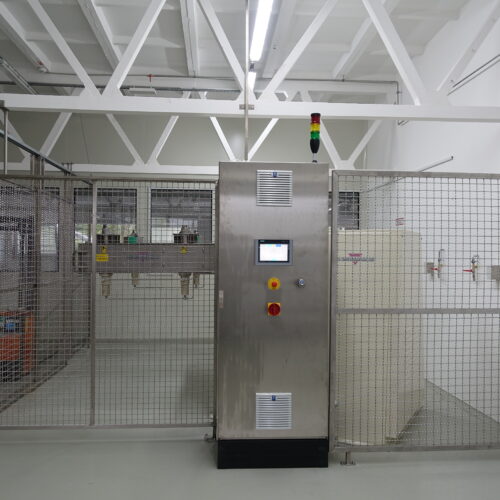
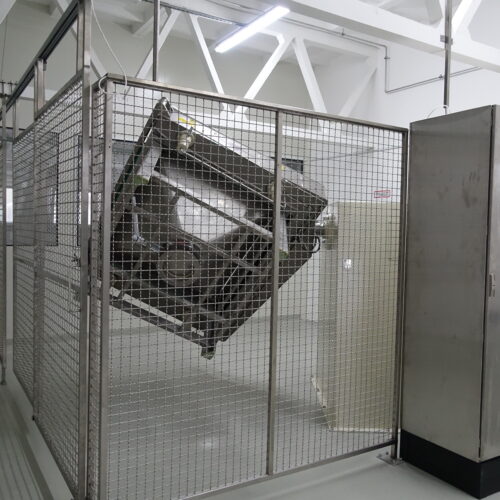
8 steps to a perfect mixing result
Mode of operation of the container mixer JEL CM
The mixing process for container mixers is very simple. When designing the mixing system, the main focus is on making the pick-up, mixing and take-over of the container after mixing as safe and efficient as possible.

Step 1
After the container has been filled with the mix beforehand, it is transported to the container mixer by forklift truck and placed in the receiving fork.
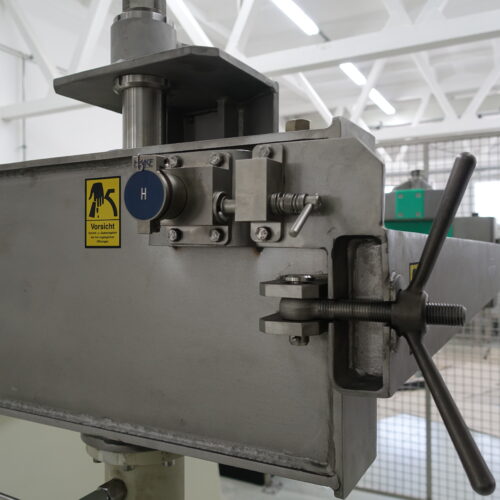
Step 2
When the container’s belly band is firmly in place, a locking bar is closed around the container and fastened by means of a hand wheel.
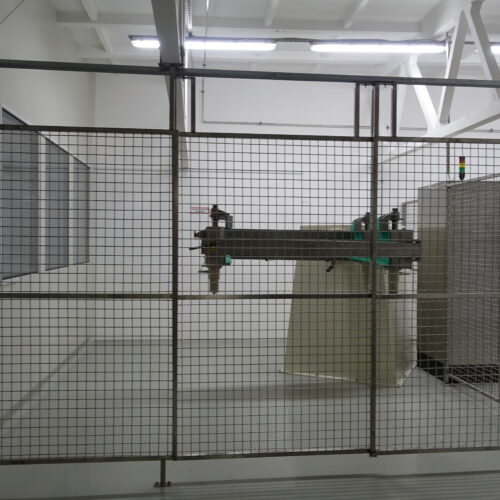
Step 3
For safety reasons, the mixing process cannot be started until the operator has left the mixing unit’s rotating range and the safety guard has been closed.
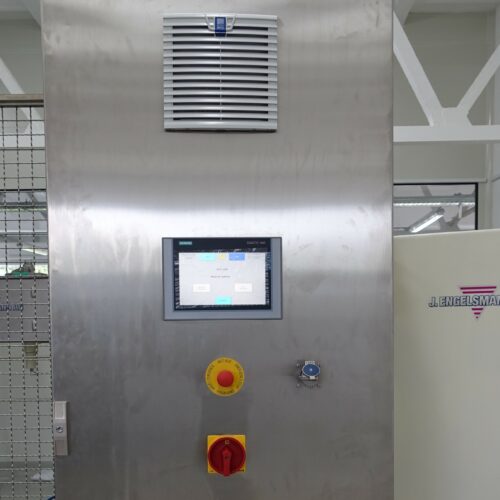
Step 4
The operator enters the desired mixing time and speed via the touch screen integrated in the control panel. He then starts the mixing process. A signal lamp shows the status of the mixing process in traffic light colours.
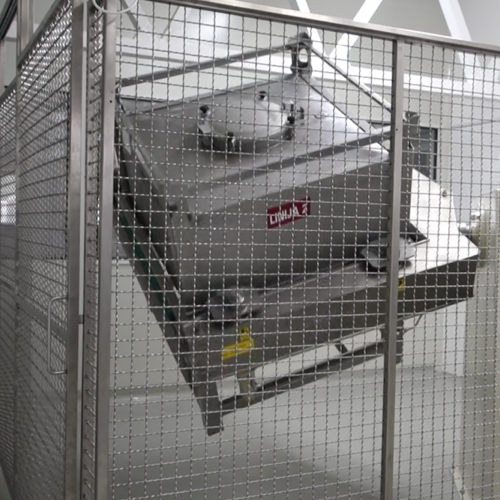
Mixing according to the principle of free fall
The product particles are lifted by the tumbling motion. Then they slide or fall back into the mix – depending on the specific angle of repose of the product.
Even with variable proportions of the individual components, intensive mixing is achieved. The inclined arrangement of the container walls also ensures gentle mixing. The interplay of mass and friction forces thus achieves a perfect mixing result – without the use of additional mixing aids.
Step 5
The pick-up fork is now set in rotation via the motor. The 30/60 degree position of the container side walls in relation to the axis of rotation creates a tumbling mixing movement.
Step 6
The tumbling motion causes an even distribution of the individual components according to the principle of free-fall mixing.
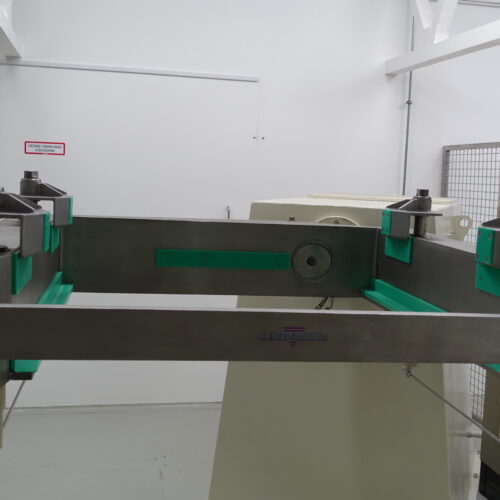
Step 7
Four hydraulic clamps hold the container securely during the mixing process. Minimal pressure drops are detected by a pressure regulator and the container is automatically retensioned if necessary. If the pressure drops outside the tolerances, the JEL CM switches off automatically.
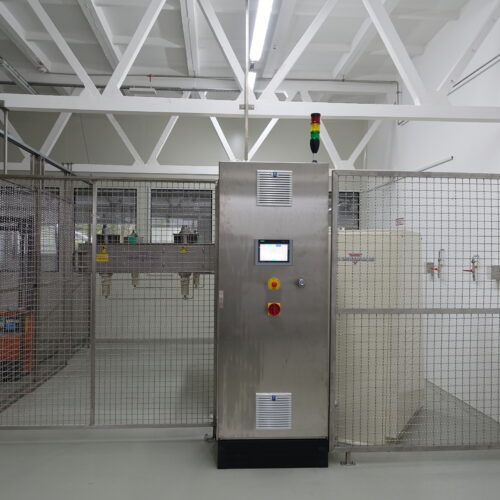
Step 8
After the preset mixing time has elapsed, the mixer stops in its initial position. The container can be unlocked, lifted out with the forklift and transported to the next process step. The next container can be clamped directly without any additional cleaning effort – ideal, especially for changing recipes.
Product contamination excluded
The JEL CM allows the greatest possible flexibility
Production can now be switched to other products or new recipes at short notice.
The container used therefore takes on several functions at once, from charging to emptying: It serves as a transport container before and after mixing, as a container during mixing and as a feed container for subsequent processing. This is economical and enables clear batch tracing.
The great special feature of container mixers, however, is that product contamination can be practically ruled out.
The JEL CM works as a closed system into which no foreign bodies can penetrate at any time. Especially in the strictly regulated food industry, this aspect is enormously important for producers. Contamination of foodstuffs means a drop in quality and can lead to image damage or high penalties and compensation payments.
Contamination-free operation, ATEX and GMP versions, combined with adaptability to a wide range of container sizes and products, make the JEL CM container mixer a real all-rounder for the food industry. And of course also for chemicals, pharmaceuticals and your industry.
And: Container mixers can do much more than mixing
In addition to mixing solids, the JEL CM can be used for many special purposes: dissolving solids in liquids, polishing metal and plastic parts, moving inert media without structural changes, cleaning and disinfecting containers.

